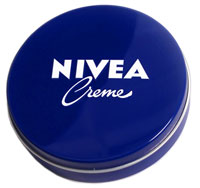
What are the key dates in anti-aging innovation? Which product families have contributed to shaping this market? At the Cosmetic 360 show, Jean Claude Le Joliff, President of the Cosmétothèque, presented a conference to make an update on the state of the art in cosmetology, and in particular on anti-aging skincare.
A biologist by training, Jean-Claude Le Joliff has worked for the Bourjois-Chanel Group as the R&D, and then Research and Innovation Manager.
 He is the founder of Inn2C, a consulting firm in R&D and Innovation, and he created the
Cosmétothèque®
in 2013, the first trade and expertise organization for the cosmetics industry.
He is the founder of Inn2C, a consulting firm in R&D and Innovation, and he created the
Cosmétothèque®
in 2013, the first trade and expertise organization for the cosmetics industry.
During this short presentation, he offered his listeners to take them on a
‘short journey into the history of anti-aging cosmetics’.
Each of its eight main phases is determined by a specific family of products.
1st phase: granny’s recipes and secrets
So-called granny’s secrets or ‘miracle’ recipes have long and very often made up the first phase in major brands’ development.
‘As usual, or almost, things started with miracle recipes’, Jean-Claude Le Joliff explained. ‘It is always the same scenario: an aunt, an old uncle, or an expert chemist, for example, will do something particular, and soon things will structure around major products’.
Nourishing creams
The first large family of products was created after a long period of homemade recipes: nourishing creams settled on the market and remained there for long. They were rich creams, like ointments or cold creams, and based on the galenic formula of cerates, which appeared in the European Pharmacopoeia in the 17 th century.
Some of these nourishing creams can still be found in beauty departments, and were for many years, or are still, essentials in the cosmetics industry.
It is the case of the small Nivea box, which was created in 1911, became blue in 1925, and
‘is still one of the most manufactured products in the world today’,
Jean-Claude Le Joliff specified.
Just like the iconic Nutrix cream launched in 1936 by the founder of Lancôme and a chemist, Doctor Vélon, which is presented as the ‘skin’s guardian angel’.
Creams with vitamins
‘Then, the state of the art was integrated very quickly’,
the speaker went on,
‘in particular through a large family of products called “skin vitamins”. The idea was to supplement the first type of products, which were actually quite passive, with substances that would ensure a certain activity: vitamins were the first candidates’.
The interest and the role of vitamins were discovered in the early 20
th
century. The cosmetics industry soon took interest in them and incorporated them into beauty cream formulas as a supplement.
As an example, Pond’s Skin Vitamin was marketed in 1937.
Today’s creams enriched in vitamins A, E, and C arrived later on the market, in the early 70s.
Hormonal creams
‘The next phase has to do with anti-aging’,
Jean-Claude Le Joliff continued, specifying that
‘glandular extracts were used first, because it was already known that the decline in the activity of glands activated aging’.
This idea was adopted by several cosmetics manufacturers. The first products were formulated with glandular extracts, like Amor Skin, by German brand Opoterapia, launched in the late 1920s.
Then, the industry started using synthetic substances described as hormones. These hormonal substitutes were authorized in particular by American regulations until the 1960s, and they led to the development of numerous references that made a great impact in their time: Hormone Twin Youthifiers by Helena Rubinstein in 1932, Hormone Cream by Endocream in 1948, Eterna 27 by Revlon in 1962…
Placental creams
‘In Europe, where these hormonal derivatives were banned, manufacturers turned towards other concepts, in particular biogenous substances, with a view to revive biological activity’,
explained the President of the Cosmétothèque.
‘This marked the birth of the large family of placental extracts and creams’.
These placental extracts were always of animal origin and mainly derived from bovine amniotic liquid. They were used by a whole series of emblematic products: Tree of Life Cream, by Helena Rubinstein in 1958, or Amnioderm, by Payot.
Meanwhile, another substance was created around the 1950s: botanical placenta. ‘This novel idea, at the origin of organic cosmetics, implied the use of plant-derived substances for their biochemical properties’, Jean-Claude Le Joliff added.
Embryonic creams
Then, brands took interest in Alexis Carrel’s research work to stimulate the skin. This 1912 Nobel Prize winner studied how living tissues could be maintained alive with embryonic extracts. ‘This is how advanced knowledge was introduced in formulation’, the speaker emphasized. These products composed of animal embryonic extracts, mainly derived from chicken, were mostly placed on the market as from the 1950s, like Orlane’s Embryo Serum, in 1956.
Biological creams
‘It is in the 1970s that things started to get structured a bit more, and Biology gradually found a place in laboratories’,
the speaker added. It was the beginning of the era of biological creams.
‘These were aimed to target well-identified biological systems, like cell vitality, oxygen consumption, ATP boosters (Adenosine TriPhosphate)… which could be assessed and measured – a brand new practice’,
he specified.
Several examples of well-known products illustrate this family, like Orlane’s B21 Cream, which is still available, or Chanel’s No.1 F.R.E (balanced respiratory factor) emulsion.
Anti-aging creams
‘But the real disruptive innovation took place in the middle of the 80s’,
Jean-Claude Le Joliff revealed. A new family was born: anti-aging products.
‘They featured different characteristics: they were monoproducts, they sometimes bore unusual names, and they used well-established biological concepts. They were based on better knowledge of skin’s biology physiology and benefitted a sociological phenomenon.’
Indeed, the middle of the 1980s corresponds to forty years after baby boomers were born. These consumers were 40 at that time, so they started to grow concerned with anti-aging, and the demand for this type of cosmetic treatments started to develop.
Capture by Dior, Niosôme by Lancôme, and Night Repair by Estée Lauder became best sellers.
‘Little by little, the market got organized according to these anti-aging cosmetics’, the speaker added. And in parallel, innovations in anti-aging ingredients developed, while storytelling strategies increasingly focused on them: the Natural Moisturizing Factor (N.M.F), collagen, mucopolysaccharides (MPS), hyaluronic acid derived from beetroot juice, ceramides, Omega-3, 6, and 9… as well as phospholipids, alpha hydroxy acids (AHA), biopeptides, ‘of which Matrixyl is the best representative and the most innovative ingredient of the past twenty-five years’, polymers, polyphenols, etc.
All these innovations, combined with the many biological concepts, emerging technologies, and contradiction matrices due to regulations or end users, like organic cosmetics, played a crucial role in the anti-aging skincare market dynamics.
And for tomorrow’s formulators,
‘knowing about the state of the art does not make it possible to repeat the same thing, but it gives an important advantage to try and better define what will happen next’,
concluded the founder of the first organization for the preservation of cosmetics,
‘because what does not have a past has no future’.
HLH



















